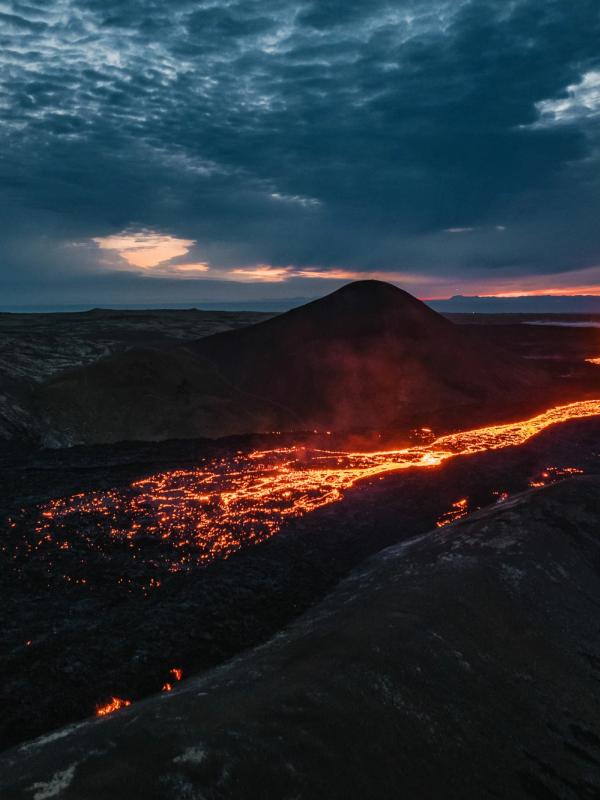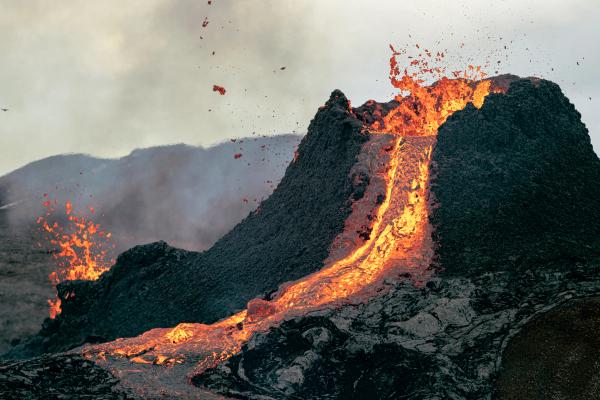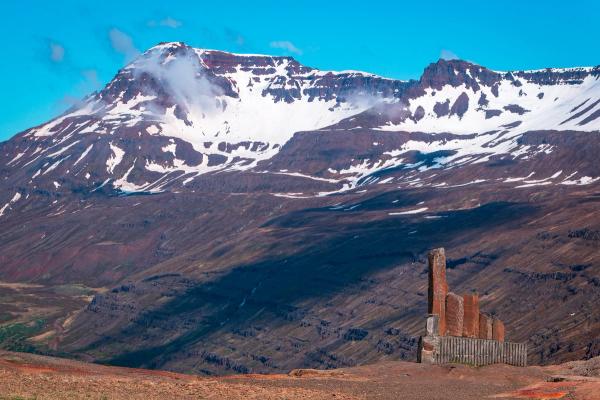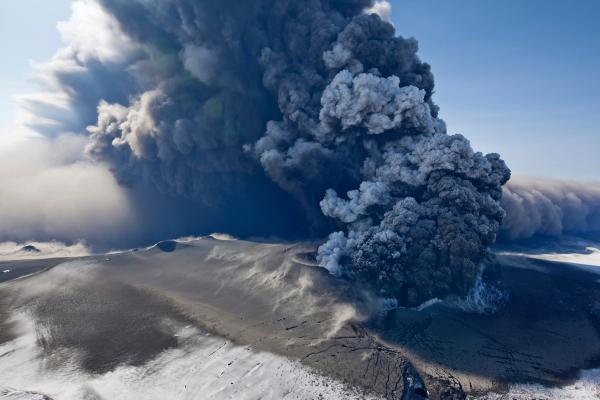
Volcanic Activity in Iceland: Will It Disrupt My Travel Plans?
Iceland’s position on the Mid-Atlantic Ridge makes it one of the most volcanically active places on Earth. This energy brooding beneath the surface can cause earthquakes, release gases, and cause volcanic eruptions to rock the country.
In this article, we’ll explore when volcanic activity in Iceland might disrupt your travel plans. Recent seismic events on the Reykjanes Peninsula have caused some concern among travelers, so this article will delve into volcanic activity in Iceland, safety considerations for travelers, and the impact (if any) on tourism—and your plans for a campervan road trip.
Understanding Iceland's Volcanic Landscape
Iceland boasts many volcanoes, with over 130 volcanic systems scattered throughout the country. The intense geological activity caused by the diverging tectonic plates is why these volcanoes exist, and Iceland has both dormant and active volcanoes.
Volcanic Activity in Iceland
Volcanic eruptions in Iceland are normal, with an eruption happening every five years on average. However, since 2021, there has been a surge of volcanic activity concentrated on the Reykjanes Peninsula, which has already caused three different eruptions.
As of writing, the area is once again suffering from earthquakes and is threatened by an eruption. The Icelandic Met Office has been closely monitoring the situation, indicating a persistent likelihood of an imminent eruption. The town of Grindavík, located in the affected area, has been evacuated as a precautionary measure.

The Reykjanes Peninsula: A Hotbed of Volcanic Activity
The Reykjanes Peninsula is southwest of Reykjavík is filled with mossy lava rocks, volcanic craters, and small coastal towns. As home to the Keflavik International Airport, the region is very important to the Icelandic tourism industry.
Recent Seismic Events and Evacuations
Over the past few weeks, the increased seismic activity has led to evacuations and road closures. Mount Thorbjörn and the town of Grindavík have been the epicenter of this seismic swarm, with hundreds of earthquakes recorded daily. The town of Grindavík was evacuated as a precaution when the risk of an eruption in the area increased.
It’s always very difficult to predict where and when a volcano will erupt, but Icelandic volcanologists believe that the magma could emerge in or near Grindavík. There is also a possibility the volcano will begin erupting underwater, off the coast of Grindavík, which would cause a dangerous ash cloud.
This isn’t the first eruption in the area—earlier eruptions occurred in 2023, 2022, and 2021. The Reykjanes Peninsula is believed to have entered a stage of heightened volcanic activity.

Is it Safe to Visit Iceland?
It is entirely safe to visit Iceland, even with the potential for an eruption.
Travel in Iceland is safe largely depending on the specific areas affected by the recent volcanic and seismic activity. Currently, the increased seismic activity is localized in the southwestern Reykjanes Peninsula, primarily impacting Grindavík, the Blue Lagoon, and the roads leading to these areas. Fortunately, the rest of the country remains unaffected, making travel to other parts of Iceland safe and viable.
Effects on Air Travel
Despite the likelihood of a volcanic eruption in Iceland, international flights to and from Keflavík International Airport (KEF) are operating as usual. The Icelandic authorities are, of course, keeping a close eye on the situation in collaboration with aviation agencies, ensuring the safety of air travelers.
Note that even during an eruption, the Icelandic Government expects the impact on international flights to be minimal. Any eruption that happens here won’t cause such a large and disruptive ash cloud as the one caused by the Eyjafjallajökull eruption in 2010.

Exploring Iceland's Volcanoes
For adventure seekers and nature enthusiasts, Iceland's volcanic activity offers a unique opportunity to witness the raw power of nature. While safety should always be a priority, there are ways to experience Iceland's volcanic wonders safely and responsibly.
Visiting Volcanic Sites
Iceland offers several accessible volcanic sites that provide a captivating experience for visitors. Descending into the dormant Þríhnúkagígur volcano, located near Reykjavík, allows you to explore the inner workings of a volcano without the presence of lava.
Another solid option is the Lava Show in Reykjavík or Vik, where you can witness molten lava in action, with the staff heating up black sand until it turns into molten lava again.
Enjoying Geothermal Spas
Iceland’s volcanic activity has a huge upside; the presence of some gorgeous hot springs. Sky Lagoon, Hvammsvík Hot Springs, and Krauma are all excellent options for a relaxing soak in hot springs, surrounded by Iceland's breathtaking landscapes.
Additionally, public swimming pools throughout the country offer a more affordable and authentic experience for locals and travelers alike.
Staying Informed and Prepared
Any trip to Iceland requires you to stay up to date with the weather – the potential volcano eruption is just another thing you should be aware of when in the country. The following tips can help you navigate the situation:
- Monitor Local Authorities: Stay updated with the latest information and guidance from the Icelandic authorities, such as the Icelandic Met Office and the Civil Protection Agency. They provide real-time updates and safety instructions.
- Check Travel Advisories: Regularly consult the travel advisories issued by your country's foreign office or relevant government agencies. These advisories provide valuable information regarding travel safety and any restrictions or recommendations for specific areas.
- Plan Alternative Itineraries: If your original travel plans include areas affected by recent volcanic activity, consider adjusting your itinerary to explore other parts of Iceland that are currently unaffected. This way, you can still enjoy the country's natural beauty and unique attractions.
- Follow Safety Guidelines: When visiting volcanic sites or engaging in outdoor activities, always adhere to safety guidelines and instructions provided by local authorities. This includes respecting any restricted areas, wearing appropriate gear, and being aware of potential hazards.
In Conclusion…
Iceland's volcanic activity and seismic events add a fascinating dimension to its already enchanting landscapes. While the recent surge in seismic activity and the possibility of a volcanic eruption have raised concerns, they are unlikely to affect your travel plans. Iceland remains a very safe country to visit.
